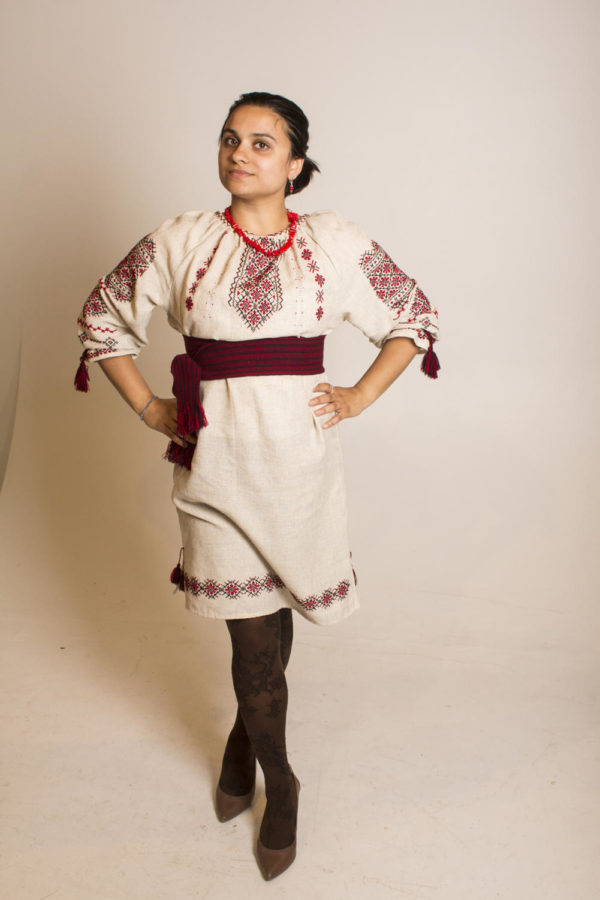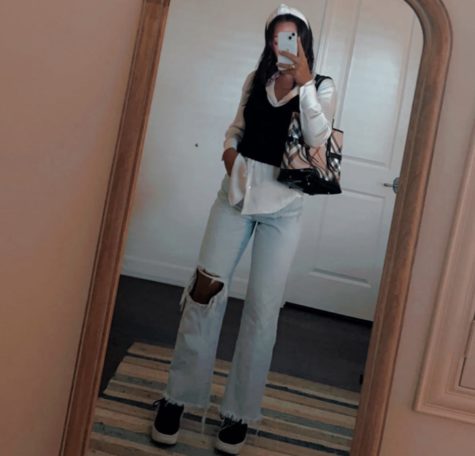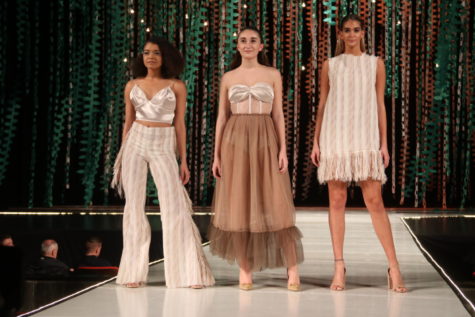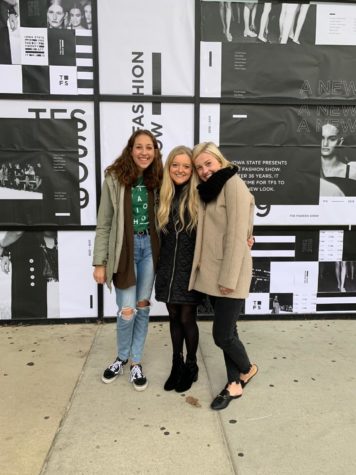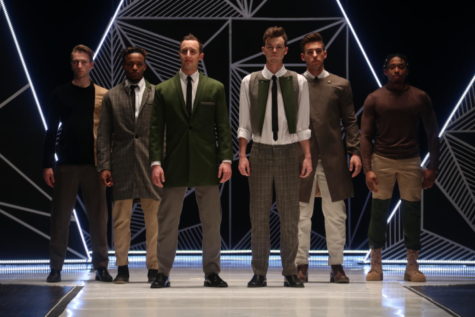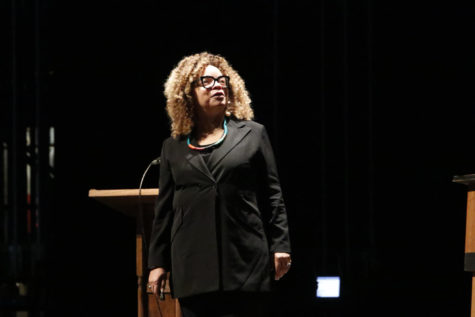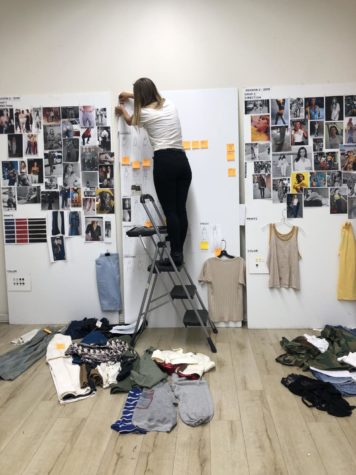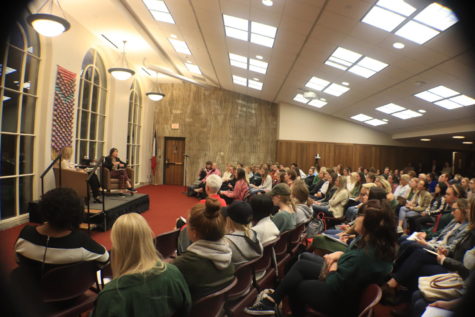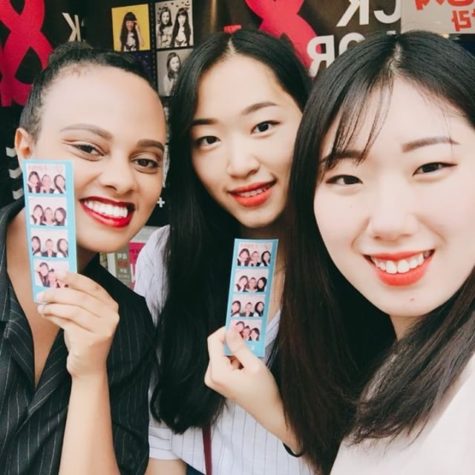Students express cultural identity through dress
May 4, 2015
Students travel from all over the world to attend Iowa State and experience American culture, but many students express a strong hold to their culture of origin in how they dress.
With more than 800 clubs associated with Iowa State, many of them represent different cultures and allow students to interact with those who share similar values.
Simrita Varma, freshman in global resource systems, found expressing her culture through dress grew easier after moving to Iowa State. While she was born in the U.S. and grew up in Johnston, Iowa, her parents instilled Indian culture values at a young age. Her lifestyle incorporates aspects of both American and Indian culture.
As a Hindu, Varma’s religion and culture are tied very closely to each other. Many celebrations are both religious and cultural events. More specifically, Diwali, also known as the Festival of Lights, is a largely celebrated event among Hindus around the world.
Varma showcases her excitement for Diwali by dressing in her traditional Indian clothing. Many buy new traditional clothing like a sari or salwar kameez for this annual celebration. A sari is a draped garment for females that wraps around the waist. The salwar is loose pajama-like trousers and a kameez is a long shirt or tunic. Styles vary between men and women.
While Varma enjoys dressing in her cultural clothing for big events, she also tries to incorporate it on campus.
“Aside from events, I’ll sometimes wear Indian clothes around campus mainly because they’re more comfortable than a lot of the clothes that I usually wear,” Varma said.
Varma said representing her culture was more difficult growing up because of the lack of Indians in her home town.
“After coming to college, I found many more Indians from the U.S. and India alike who were successfully representing their culture, which made it easy to continue to represent my culture,” Varma said.
Unlike Varma, David Mwirichia, senior in economics, lived his early childhood outside of the U.S. He moved to America from Kenya at age 9.
Aside from the initial culture shock, Mwirichia said he feels he has transitioned well after moving to the U.S. While he doesn’t celebrate any events or celebrations specific to Kenya, he and his family celebrate common events like weddings and graduation parties slightly differently from other cultures.
The food and dress at these events differ from how Americans celebrate them, Mwirichia said. Goat and Mandazi, a donut-like treat, are commonly seen at Kenyan events. The dress is usually a mixture of traditional and Western-style clothing.
“Depending on the region, you can typically find someone dressed in a dashiki and women with their hair in a scarf,” Mwirichia said. “But more often than not our culture is expressed through clothes of a relatively Western style but possessing African symbols, colors or styles.”
Similar to Varma, Mwirichia finds celebrating his culture at Iowa State is widely accepted because of the variety of cultures represented on campus.
“Coming to college and still representing your culture is much easier because here you are able to connect with students from all over the world and join organizations that are composed of people of a similar background,” Varma said.
Shalika Khindurangala, graduate student studying higher education student affairs, was raised in Ukraine. At 17 years old, she moved to Adams, Minn. to live with a host family and complete her senior year of high school as a foreign exchange student.
Khindurangala considers herself an adaptable person, but said the dress is quite different in Ukraine. Women are expected to dress nicely for any occasion, whether it be going to the grocery store or to a wedding.
“We always, always, always dress up. Full out, like makeup, hair [and] heels,” Khindurangala said. “Even if it’s casual dress it’s still very put together and even if it’s for the grocery store at 1 a.m.”
Although Khindurangala grew up attending schools that did not have a specific uniform, each student was expected to look nice, more specifically, the girls.
“I started wearing heels to school every day when I was 11,” Khindurangala said.
Khindurangala said her fashion styles have not changed. Outside of classes, she incorporates more traditional clothing into her outfits. Vyshyvanka is a traditional, embroidered skirt she wears for special occasions.
Red and white are reoccurring colors in Khindurangala’s wardrobe, as they are the patriotic colors of Ukraine. As war has broken out in Ukraine, people dress patriotically even more often to display pride for their country.
Additionally, Khindurangala incorporates traditional accessories into her outfits. She commonly wears statement necklaces made of coral, and flower crowns and clips. Specifically the poppy flower because it is popular in Ukraine.
Despite the differences of dress in America, Khindurangala continues to dress nicely for most occasions. She said it’s harder to do here because people often perceive you as snobby if you’re dressed up and aren’t giving a presentation or going to an interview.
“People will ask me when I’m dressed up, ‘what’s going on today,’” Khindurangala said. “And I say, ‘Nothing is going on today. My life is going on today.’”
Yujin Park, senior in mechanical engineering, lived the first 11 years of his life in South Korea before relocating to the Netherlands.
As a child, Park rarely focused on his clothing, as academics was prioritized in South Korea.
“When I was young, I used to attend two tutoring sections — math and English — beyond my elementary school,” Park said. “Many Korean parents want their children to be successful at academics.”
After moving to the Netherlands, Park acquired a Dutch nationality. Despite his new nationality, he still celebrates Korean events.
Koreans are expected to dress up in traditional clothing for these events, but Park said many do not anymore.
“I don’t actually wear many things that symbolizes my culture, but I can tell if someone is Korean by their fashion,” Park said. “Lots of Koreans tend to chase the trendy fashion.”
Although Park doesn’t find dress the hardest part of transitioning as an international student, getting involved has allowed him to express and show pride about his culture. He is currently the president of the Korean Student Association where he organizes events to spread Korean culture.
While many ISU students do not often express their clothing through dress on campus, students like Varma, Mwirichia, Khindurangala and Park express and show pride about their culture with ease. They say it’s because of the diversity within the student body.

